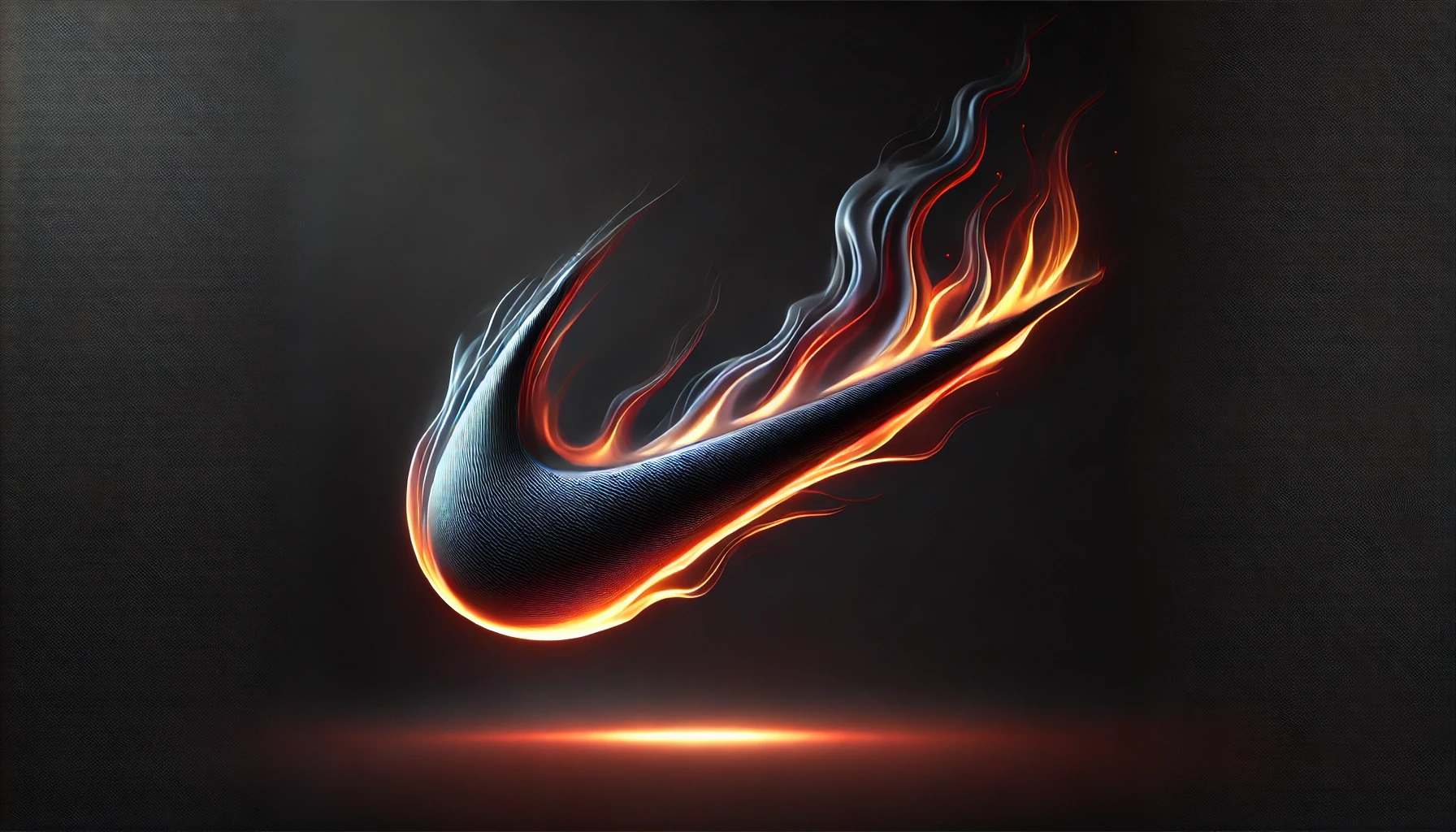[nectar_dropcap color]W[/nectar_dropcap]elcome to Take Five, a short stack of the things I couldn’t scroll past this week. An excerpt from a book. A scene in a film. Lyrics to a song. A great quote. A horrible tweet. Whatever lingered a little longer than expected.
There’s a lot of noise out there—content for content’s sake, endless feeds full of things that'll ruin you. This isn't that, or at least it tries not to be.
I’m a serial bookmarker. Each week, I share five things that left a mark, like fleeting moments of grief, laughter, thought, joy, frustration, awe, or something that stirred up and challenged me to…
Think. Reflect.Write.
It’s a tiny habit born of curiosity and creativity. And sometimes, these fragments are what I need to feel a little more grounded.
A little more connected.A little more human.
[divider line_type="Full Width Line" line_thickness="1" divider_color="default" custom_height="60" custom_height_phone="10"] [nectar_badge display_tag="label" badge_style="default" bg_color_type="global" color="accent-color" text_color="#ffffff" padding="small" border_radius="20px" display="block" text="Film 🍿"]
1. “New York, I Love You”: Chris Cooper & Robin Wright (2008)
[vc_video link="https://youtu.be/CStIonYD1Og" css el_class="player"] “New York, I Love You” is a lesser-known anthology film, a patchwork of eleven short love stories unfolding across New York City.
Each vignette captures a different version of intimacy. It doesn’t try to paint love in broad strokes. It zooms in. Sometimes uncomfortably close.
In this scene, Robin Wright is standing outside a restaurant, smoking a cigarette, and talking to a stranger—as New Yorkers often do. She's flirtatious, commenting about New York City being the only city in the world where you can have an intimate moment on the sidewalk with a stranger and then walk away.
At first, it feels like something is about to happen. Then they go back inside.
[SPOILER ALERT]
She’s not talking to a stranger.She’s talking to her husband.
This wasn’t a random connection at all. It was a ritual. An attempt at starting over. Or at least pretending to. What looked like the start of something is actually the middle of something complicated.
You see a marriage that’s frayed. Two people trying to feel something again, even if they have to act it out to convince themselves they still love each other.
It’s shot in a way that sneaks up on you. It’s a reminder that love is fragile, never black and white, and doesn’t always look like a beginning or an end.
Sometimes, it’s just two people in the middle, trying hard to hold on to whatever's left. Trying to find their way back.
If only for a New York minute.
[divider line_type="Full Width Line" line_thickness="1" divider_color="default" custom_height="60" custom_height_phone="10"] [nectar_badge display_tag="label" badge_style="default" bg_color_type="global" color="accent-color" text_color="#ffffff" padding="small" border_radius="20px" display="block" text="Books 📚"]
2. “Tomorrow, and Tomorrow, and Tomorrow” by Gabrielle Zevin (1993)
Tomorrow byGabrielle Zevin follows the decades-long relationship between two childhood friends, Sam Masur and Sadie Green, who reconnect in college and go on to build a groundbreaking video game company together. It’s a story about creativity, identity, friendship, grief, and the blurred lines between love and friendship (or companionship)—told through the lens of the games they make and the lives they try to build.
The video game thread, which could’ve easily become a gimmick, actually works beautifully. It adds texture, metaphor, and a sense of playfulness to what is otherwise a deeply human story. And Zevin doesn’t just use her characters as plot devices—she integrates meaningful commentary about disability, gender, grief, love, and ambition in ways that feel familiar.
That said, the central friendship between Sam and Sadie—while messy in some ways—can feel unearned in others. The emotional glue that binds them isn’t always clear. You feel their proximity, but not always their depth. The “why” behind their devotion—particularly Sam’s romanticized longing for Sadie—is more implied than explored. Maybe that's the point.
Still, even if some of the more emotional moments feel thin, their imperfections capture the way partnerships can mirror true love. And the way games, like life, are played in turns, at different levels—and are oftentimes never quite finished.
Here are some of my favorite passages in the book that I've highlighted. [nectar_icon icon_family="fontawesome" icon_style="border-basic" icon_border_thickness="2px" icon_color_type="color_scheme" icon_color="black" icon_padding="10px" pointer_events="all" icon_size="20" icon_fontawesome="fa fa-quote-right"]“And what is love, in the end? Except the irrational desire to put evolutionary competitiveness aside in order to ease someone else's journey through life?” [divider line_type="Small Line" line_alignment="default" line_thickness="1" divider_color="default" custom_height="40" custom_height_phone="10"] [nectar_icon icon_family="fontawesome" icon_style="border-basic" icon_border_thickness="2px" icon_color_type="color_scheme" icon_color="black" icon_padding="10px" pointer_events="all" icon_size="20" icon_fontawesome="fa fa-quote-right"]“The way to turn an ex-lover into a friend is to never stop loving them, to know that when one phase of a relationship ends it can transform into something else. It is to acknowledge that love is both a constant and a variable at the same time.” [divider line_type="Small Line" line_alignment="default" line_thickness="1" divider_color="default" custom_height="40" custom_height_phone="10"] [nectar_icon icon_family="fontawesome" icon_style="border-basic" icon_border_thickness="2px" icon_color_type="color_scheme" icon_color="black" icon_padding="10px" pointer_events="all" icon_size="20" icon_fontawesome="fa fa-quote-right"]“Why wouldn’t you tell someone you loved them? Once you loved someone, you repeated it until they were tired of hearing it. You said it until it ceased to have meaning. Why not? Of course, you goddamn did.” [divider line_type="Small Line" line_alignment="default" line_thickness="1" divider_color="default" custom_height="40" custom_height_phone="10"] [nectar_icon icon_family="fontawesome" icon_style="border-basic" icon_border_thickness="2px" icon_color_type="color_scheme" icon_color="black" icon_padding="10px" pointer_events="all" icon_size="20" icon_fontawesome="fa fa-quote-right"]“To allow yourself to play with another person is no small risk. It means allowing yourself to be open, to be exposed, to be hurt. It is the human equivalent of the dog rolling on its back—I know you won't hurt me, even though you can. It is the dog putting its mouth around your hand and never biting down. To play requires trust and love. Many years later, as Sam would controversially say in an interview with the gaming website Kotaku, ‘There is no more intimate act than play, even sex.’ The internet responded: no one who had had good sex would ever say that, and there must be something seriously wrong with Sam.” [divider line_type="Small Line" line_alignment="default" line_thickness="1" divider_color="default" custom_height="40" custom_height_phone="10"]
And then this one, which is my favorite. One of the most touching themes in the book is when Sadie is in the hospital and Sam keeps visiting her, even though she wants to be left alone. She asks him, “Why do you keep coming?”
[nectar_icon icon_family="fontawesome" icon_style="border-basic" icon_border_thickness="2px" icon_color_type="color_scheme" icon_color="black" icon_padding="10px" pointer_events="all" icon_size="20" icon_fontawesome="fa fa-quote-right"]“Because. Because you are my oldest friend. Because when I was at my lowest, you saved me. Because I might have died without you or ended up in a children’s psychiatric hospital. Because I owe you. Because, selfishly, I see a future where we make fantastic games together, if you can manage to get out of bed. Because.” [divider line_type="Small Line" line_alignment="default" line_thickness="1" divider_color="default" custom_height="40" custom_height_phone="10"]
Because. Because sometimes, “because” is the only answer that makes sense.
[divider line_type="Full Width Line" line_thickness="1" divider_color="default" custom_height="60" custom_height_phone="10"] [nectar_badge display_tag="label" badge_style="default" bg_color_type="global" color="accent-color" text_color="#ffffff" padding="small" border_radius="20px" display="block" text="Books 📚"]
3. Malcom Gladwell: “Outliers: The Story of Success” (2008)
When most people hear about Malcolm Gladwell’s Outliers: The Story of Success, they immediately think of the 10,000-hour Rule—the idea that mastery in any field requires 10,000 hours of focused, deliberate practice.
Gladwell popularized the 10,000-hour Rule, but he’s clear that not everyone gets the opportunity to put those hours in. And when you do, you need the right environment—supportive conditions, mentors, access to tools, and often, cultural permission to pursue something that intently.
But Outliers is more about the unseen forces—timing, culture, access, even family history—that quietly shape success long before it gets noticed.
He argues that culture, history, and family legacy matter more than we think. Where your parents—or even great-grandparents—grew up, how your culture relates to authority, and what traditions you inherit can influence everything from your confidence in the workplace to your willingness to speak up, take risks, or persevere through adversity.
Gladwell’s framework is both eye-opening and humbling. It reminds us that talent, passion, and grit matter—but they’re not the whole story. Behind nearly every “self-made” story is a trail of opportunity, timing, and often, pure luck. He breaks it down into several key elements:
- Passion
- Talent
- Hard Work
- Opportunity
- Arbitrary Advantage
Take Bill Gates, for example. Yes, he is brilliant—and driven. But he also had rare access to a computer terminal as a teenager in the early 1970s—years before most people even knew what a computer was. That early access gave him the edge to log thousands of hours of programming experience before he even entered college.
The same goes for The Beatles, who didn’t become legends overnight. They played grueling sets in Hamburg clubs for hours on end, night after night, perfecting their timing, sound, and endurance. Those marathon sessions became their training ground—arguably the birthplace of their genius.
One of the most powerful ideas in Outliers is that success is “accumulative.” It builds on itself, step by step, often invisibly. Once someone gets a head start—a better school, an early mentor, a supportive environment—they’re more likely to get the next opportunity. And the next. And the next. [nectar_icon icon_family="fontawesome" icon_style="border-basic" icon_border_thickness="2px" icon_color_type="color_scheme" icon_color="black" icon_padding="10px" pointer_events="all" icon_size="20" icon_fontawesome="fa fa-quote-right"]
““When we understand how much culture and history and the world outside the individual matter to professional success—then we don’t have to throw up our hands in despair. We have a way to make successes out of the unsuccessful.”
[divider line_type="Small Line" line_alignment="default" line_thickness="1" divider_color="default" custom_height="40" custom_height_phone="10"]
Success, Gladwell argues, is rarely a solo act. He’s not saying it can’t be done, but it absolutely comes easier to some than others.
In that respect, Outliers is more about context, access, timing, and accumulation (knowledge, wealth, etc.). If you want to better understand the conditions that shape your success, this book is worth reading—and revisiting from time to time.
[divider line_type="Full Width Line" line_thickness="1" divider_color="default" custom_height="60" custom_height_phone="10"] [nectar_badge display_tag="label" badge_style="default" bg_color_type="global" color="accent-color" text_color="#ffffff" padding="small" border_radius="20px" display="block" text="Podcasts 🎙️"]
4. Stuff You Should Know: NYC Water — An Engineering Marvel
[vc_video link="https://youtu.be/gbLwDdvphcY" css el_class="player"]
If you’ve ever had a bagel or a slice of pizza in New York and thought, “Why does it taste better here?”—there’s a good chance it's because of the water.
In a fascinating episode of Stuff You Should Know, hosts Chuck Bryant and Josh Clark dive deep (literally and figuratively) into one of the most underappreciated triumphs of modern urban life: New York City’s water system.
They explain how a city of over 8 million people gets its water, every drop of it, from reservoirs that sit 400–600 feet above sea level, 125 miles away. And no, it’s not pumped in by machines. It’s powered almost entirely by gravity. Gravity!
They trace the city’s transformation from shallow wells to the Croton Aqueduct and then to the massive engineering feats that are the Catskill and Delaware Aqueducts—still in use today.
These channels stretch through the Hudson Valley, through mountains, tunnels, and reservoirs, feeding the five boroughs with water so clean it’s one of only a handful in the U.S. that doesn’t require filtration.
The guys unpack how NYC’s system became one of the cleanest and most efficient in the world—and how the mineral-rich, unfiltered water impacts the gluten structure in bagels and the fermentation process in pizza dough.
It’s one of those episodes that makes you appreciate something you would have never thought about otherwise. And it makes you wonder how many other “civil marvels” like it are hiding in plain sight.
[divider line_type="Full Width Line" line_thickness="1" divider_color="default" custom_height="60" custom_height_phone="10"] [nectar_badge display_tag="label" badge_style="default" bg_color_type="global" color="accent-color" text_color="#ffffff" padding="small" border_radius="20px" display="block" text="Social 🐤🐧🐦"]
5. French Fuse: “Three Little Birds” Remix feat. Rylyn Clark
[vc_video link="https://youtu.be/BXlzxDl32ic" css el_class="player"]
French Fuse is a music influencer who finds clips of everyday people singing their favorite songs and remixes them into tracks you didn’t know you needed. This one is from a young boy, Rylyn Clark, singing Bob Marley’s “Three Little Birds”.
It's your daily reminder that everything’s gonna be alright.












Discussion